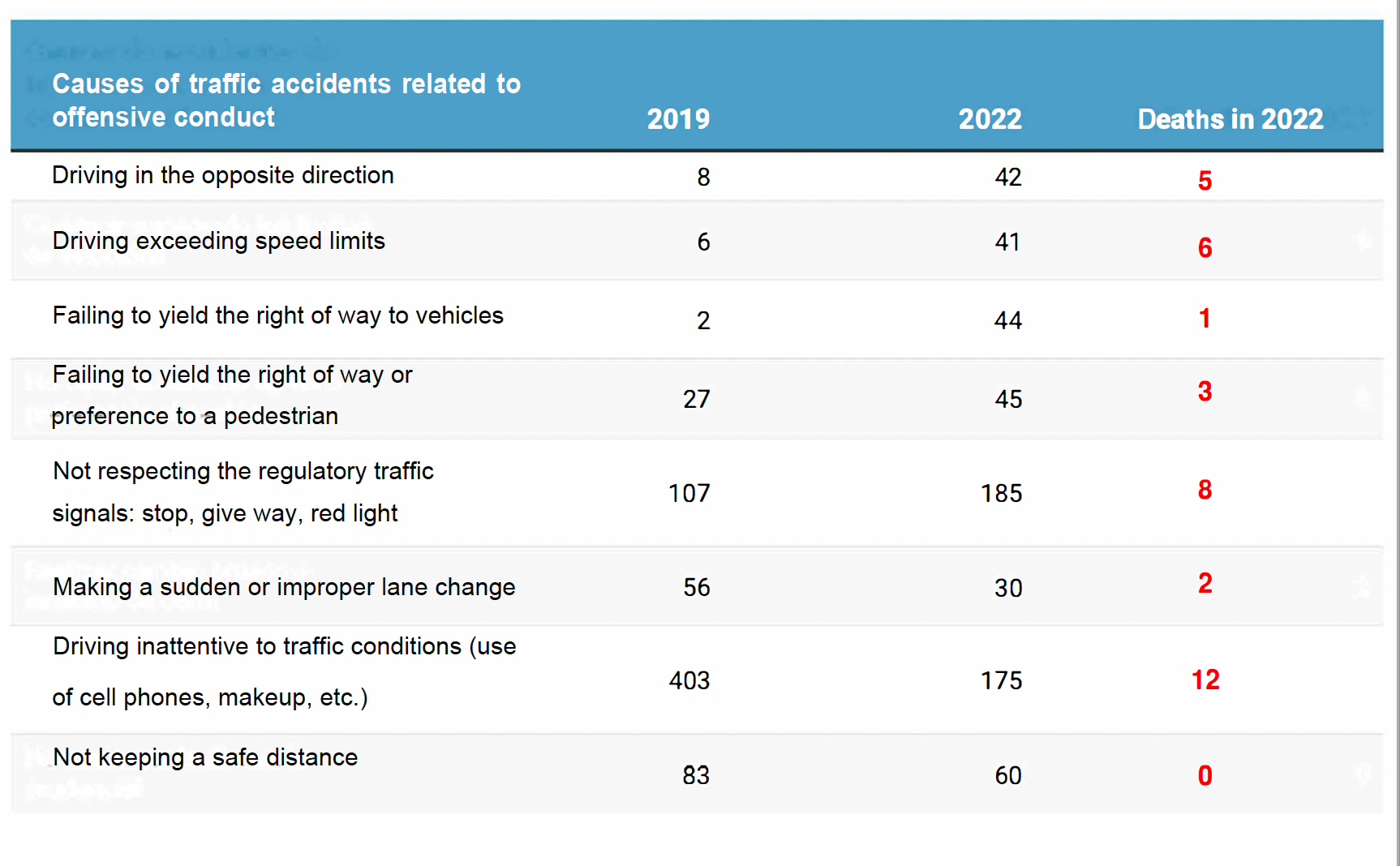Cuencanos are getting more and more aggressive in their driving, causing an increase in traffic accidents over the last three years.
Offensive behaviors are common in Cuencanos when driving, a pattern that is aggravated by the vehicular chaos that the city endures.
Speeding, driving in the opposite direction, not giving way to pedestrians, and disrespecting traffic signals are just some of the offenses in the city, according to data from the National Transit Agency.
These behaviors show a more offensive style of driving, explains Ricardo Amay, a Cuenca driving instructor for 15 years.
“In the courses we teach them that they should always go on the defensive,” says Amay.
Some of the practices that denote offensive behavior are speeding, yelling at other drivers, or ignoring signs and red lights.
Daniel Cárdenas, former Secretary of Mobility of Cuenca and an expert in road safety, says that there is a key factor that has altered the people of Cuenca in recent years: the growing vehicular chaos.
“The accelerated growth of the vehicle fleet causes more traffic jams. These generate in the driver what is known as road rage,” details Cárdenas.
He refers to the anguish or stress that people feel when they are behind the wheel.
The stress of driving in Cuenca
“Those who drive can feel safe, but almost at the same level it generates stress, and overwhelms the nerves,” detailed a perception survey, developed for the 2015-2025 Mobility Plan for Cuenca.
According to this report, 58% of those surveyed would leave consider giving up their private vehicle due to traffic problems. This occurs among people who move in the historic center of Cuenca and its surroundings.
Pablo Osorio, sociologist and mobility expert, explains that this stress has a lot to do with the time that Cuencanos now spend behind the wheel.
“Two or three years ago, for example, those who live in Challuabamba had no idea that they would have to wait 10 to 15 minutes at each roundabout. That means 30 more minutes on the move,” says Osorio.
Currently, the people of Cuenca spend more time in the middle of traffic jams, which occur both in the historic center and on the peripheral roads.
While in sectors such as Tres Puentes, the waiting time doubles at peak hours.
For example, a 4-kilometer journey from Avenida de las Américas to the Universidad del Azuay, which crosses that point, during normal hours, takes 10 minutes. At 18:30, that same route takes 20 to 40 minutes.
This dynamic is repeated in the other traffic hubs in Cuenca, where travel time can be two or three times longer.
Cárdenas points out that when the user must arrive at a certain time at the destination, that is when more aggressive behaviors arise.
“If a roundabout is very congested, at first the driver is cautious, but when time passes and the cars do not move forward, the level of risk perception begins to drop,” said Cárdenas.
Most common accidents
In addition, the former Secretary of Mobility of Cuenca says that when a driver is stressed, his concentration decreases, his vision of traffic signs decreases, he tends to make sudden maneuvers, or he is more distracted by the cell phone.
All the above increases the risk of traffic accidents.
In 2022, 917 traffic accidents occurred in Cuenca. Half were due to behaviors considered ‘offensive.’
The causes of accidents that increased the most in this period are driving at excessive speed, not yielding the right of way to other vehicles, and driving in the opposite direction.
While distracted driving accidents (with cell phones, for example) decreased compared to 2019. But still, in 2022 they left 12 dead.
Another of the most common causes of accidents is driving under the influence of alcohol. Last year there were 179 accidents for that reason, with eight deaths.


0 Comments